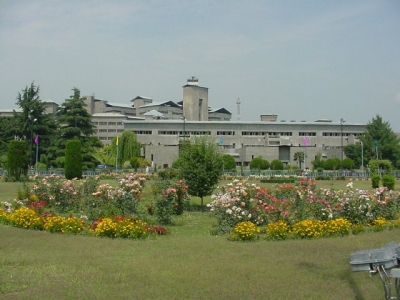SAMEER YASIR
On the Oct 17, 2001 I met Hilal Ahmad for the first time when he was in Degree College Baramulla. He had attempted suicide twice in the previous month and was saved only by timely medical care. I had asked him why had he attempted to end his life. He did not answer me.
A month before I met him, Hillal was travelling with his cousin in main market Handwara, when his cousin was killed in crossfire between militants and security forces. He saw his cousin dying a bloody death.
Hilal was tall and frail with a cigarette in his left hand, which was shaking. His eyes had dark circles with visible pain in them. It looked like that he was on a high.
On March 3, 2002 Hilal, at last, successfully killed himself.
His cousin’s death was not the only reason for ending his life. There were many. The violence in valley had a direct impact on his personnel life. Six people had died in Hillal’s neighborhood in the last decade.
Suicide is an act of intentional attribute for the end of one’s life. It is often committed out of despair and mainly by people who are in the post traumatic mental disorder. It is a global issue which takes lives of more than one million people every year.
Traumatic events can have a profound impact on the emotional, cognitive, behavioral and physiological functioning of an individual. No age group is immune to trauma, and its consequences.
It has become a problem in Kashmir. The depression due to the conflict in Kashmir had brought with itself the rampant increase in drug addiction with increased number of suicides. This menace has become a monster and it is almost impossible to fight it head-on.
In Kashmir where growing instability, uncertainty, physical abuse, torture, humiliation etc has sometimes forced people end their lives. The overall ills in the society, economic depression and structural violence rampant in Kashmir are behind the increase in number of suicides every year. borne out of conflict have contributed to the increasing rate of suicides.
The women in the valley are the biggest victim of depression. The depression can be rampant in people stranded in conflict or an experience of humiliation. Most of the people who visit a psychiatrist here often suffer from post-traumatic stress disorder.
A research conducted by Syed Amin and AW Khan reveals that “Due to continuing conflict in Kashmir during the last 21 years there has been a phenomenal increase in psychiatric morbidity. The results reveal that the prevalence of depression is 55.72%. The prevalence is highest (66.67%) in the 15 to 25 years age group, followed by 65.33% in the 26 to 35 years age group.
The difference in the prevalence of depression among males and females is significant. Depression is much higher in rural areas (84.73%) as compared to urban areas (15.26%). In rural areas the prevalence of depression among females is higher (93.10 %) as compared to males (6.8%)”.
The mental health is influenced by displacement, conflict and economic adversity. For the many persons who face uncertain futures (including those by conflict or disasters), the serious emotional and behavioral disorders afflicts their lives so much that suicide becomes an option.
And that may be the reason why a 19-year-old chooses a white robe to define it all.















